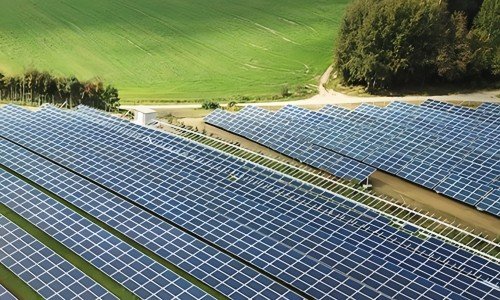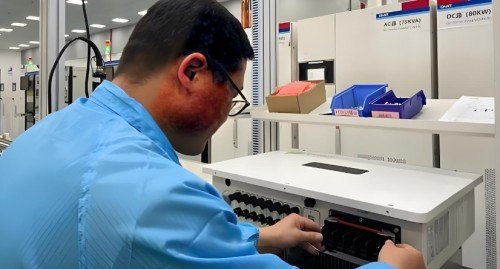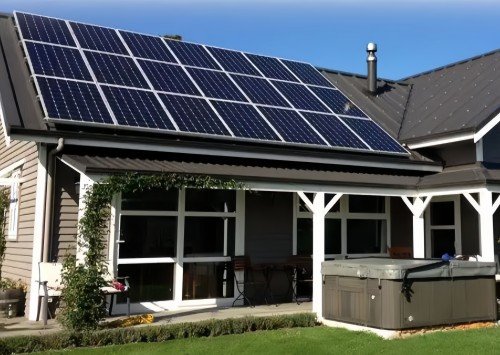Installing too many solar panels on an inverter can lead to inefficiencies, damage, and even system failure if not managed properly. Understanding inverter capacity, sizing, and the concept of overpaneling will help ensure your solar system performs at its best.
Inverter Capacity Limitations
Inverters have a maximum power threshold that they can handle, typically specified in kilowatts (kW). It’s essential to know the inverter’s rated capacity to avoid overloading.

- Inverter size1: Most residential inverters range from 3kW to 10kW, while commercial models can go up to 100kW or more.
- Maximum capacity2: This refers to the inverter’s ability to convert the power generated by your solar panels from DC to AC. Exceeding this capacity can result in overloading or inefficiency.
Example:
For a 5kW inverter, it would typically support about 15 to 20 solar panels (assuming each panel is rated for 250W to 300W). If you exceed this, the inverter may not handle the surge power effectively.
Risks of Exceeding Inverter Capacity
Exceeding the inverter’s capacity by adding too many solar panels can lead to several problems:

1. Inverter Overload3
- Issue: If the inverter receives more power than it is designed to process, it can become overloaded.
- Consequence: The inverter could overheat, malfunction, or shut down to prevent damage, leading to a loss of power production.
Example:
- A 5kW inverter can handle about 5,000W of power from the solar array. If the array is generating 6,000W or more, the inverter will likely enter “clipping mode” to protect itself, meaning excess energy is not used.
2. Reduced Performance
- Issue: If the inverter can’t handle all the power from the panels, it will operate inefficiently, potentially wasting energy.
- Consequence: You might notice a decline in your system's overall performance, with lower energy conversion efficiency.
3. Inverter Damage
- Issue: Prolonged overloading or inefficient operation can cause irreversible damage to the inverter’s internal components.
- Consequence: This may result in expensive repairs or replacement of the inverter.
Overpaneling: Is It Possible?
Overpaneling refers to adding more panels to a system than the inverter is rated for. While this can be done within certain limits, there are key considerations:

1. Inverter's Ability to Handle Surges
- Inverters are designed to handle peak power surges during sunlight hours. However, if the total wattage of the solar panels exceeds the inverter’s input capacity for extended periods, it can cause issues.
2. DC-to-AC Ratio4
- A DC-to-AC ratio that is too high can result in overpaneling, where the number of panels is too much for the inverter’s AC output capacity.
- Industry recommendation: It’s typically safe to size the inverter for 125% to 150% of the solar array’s peak output to handle surges while avoiding long-term overloads.
Example:
- A 5kW inverter can safely handle a 6.25kW to 7.5kW array (based on a 125%-150% ratio). This means you could install around 20 to 25 panels (250W each) with a 5kW inverter.
3. What Happens in Overpaneling?
- Excess Energy: Inverters often have power limitations, meaning they may not convert all the excess DC power into usable AC energy.
- Clipping: In such cases, energy may be “clipped,” or not utilized, during peak sun hours when the array generates more power than the inverter can handle.
Proper Sizing of Inverter and Panels
Properly sizing your inverter and panels ensures efficiency and system longevity. Here’s how to avoid overpaneling and underperforming inverters:

1. Understand the Inverter’s Maximum Input
- Check the maximum DC input of the inverter. Ensure the total power from the solar array does not exceed this value.
Example:
- A 5kW inverter typically supports up to 6kW of solar panels (with some models, you can go higher). Adding more panels beyond this can overload the inverter.
2. Size the Inverter for Peak Solar Output
- Select an inverter that is rated to handle 1.25 to 1.5 times the peak power output of the solar panels. This provides enough headroom for energy surges during peak sunlight.
Example:
- If you have a 6kW array, you should consider an 8kW to 9kW inverter to ensure it handles peak conditions effectively.
3. Account for Environmental Factors
- The output of solar panels varies based on temperature, geographic location, and shading. Oversizing the inverter slightly helps accommodate these fluctuations.
How to Safely Add More Panels
If you wish to add more solar panels, there are safe ways to expand your system without overloading the inverter:

1. Ensure Compatibility
- Make sure the inverter’s input capacity can handle the additional panels. Consider adding panels in series to increase the overall voltage without exceeding current limits.
2. Use a DC Optimizer
- A DC optimizer can be installed to regulate the output from individual panels, helping balance the system and avoid overloading.
3. Install a Larger Inverter
- If you add a significant number of panels, you might need to upgrade your inverter to one with a higher capacity. This ensures you can convert all the power generated.
Example:
- If you add 10 more 300W panels (3kW), the total array size will be 9kW. You will need an inverter rated at 11kW or more to handle this load without overloading.
4. Consult a Solar Professional
- Always consult with a certified installer to ensure that your system is properly sized and configured to handle additional panels safely.
Conclusion
While it is possible to add more solar panels to your system, it's crucial to ensure that the inverter is capable of handling the increased power. Proper sizing, understanding the risks of overpaneling, and using safe expansion methods will help maximize your system's efficiency and longevity.
Footnote:
-
This link explains the term Inverter size, how it is measured, and its significance for system performance. ↩
-
This link details the meaning of Maximum capacity and its importance in matching the inverter to the solar system. ↩
-
This link explains Inverter Overload, how it happens, and its effects on the inverter's performance and safety. ↩
-
This link explains the DC-to-AC Ratio, its importance in inverter sizing, and how it affects system performance. ↩




